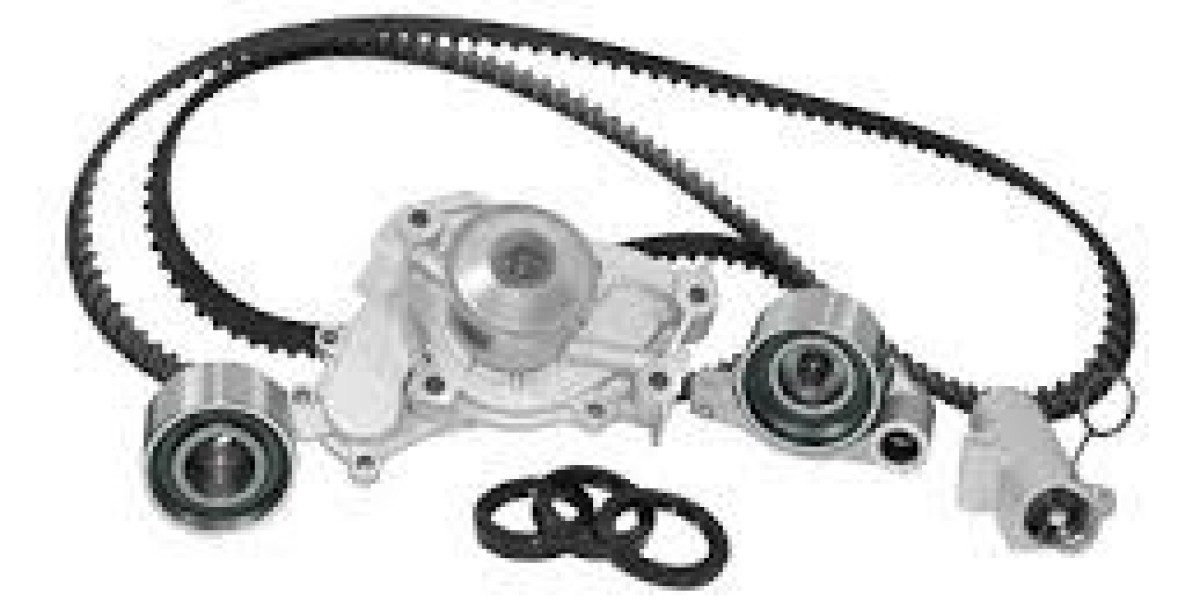When most drivers think about engine issues, they often consider oil leaks, overheating, or worn-out spark plugs. However, one of the most overlooked components is the timing belt kit. A failing kit can silently cause misalignment, damage valves, or even destroy the engine entirely. If you’re not paying attention to your timing belt kits, you may face unexpected breakdowns and repair bills that can cost more than your car’s current value.
In this article, we’ll explore why neglecting your timing belt kit is dangerous, the problems it causes, how to recognize early warning signs, and practical tips for maintenance and replacement.
Why Timing Belt Kits Matter More Than You Think
The timing belt ensures your engine’s camshaft and crankshaft rotate in sync. If this synchronization fails, even by a few seconds, the pistons and valves collide, leading to catastrophic engine failure.
A timing belt kit usually includes:
The timing belt itself
Tensioners
Pulleys
Water pump (in most kits)
Replacing just the belt without the kit often leads to premature failure since supporting components wear out at the same rate.
The Costly Consequences of Ignoring Timing Belt Kits
1. Engine Valve and Piston Damage
If the belt snaps, the pistons can hit the valves. This usually requires a full engine rebuild or replacement.
2. Unexpected Breakdowns
Neglecting replacement intervals leads to sudden breakdowns, often on highways or in remote areas, causing towing costs and safety risks.
3. Water Pump Failure
Since many kits include a water pump, ignoring the kit replacement can also trigger cooling system issues and overheating.
4. Hidden Long-Term Wear
Even if the belt doesn’t break, worn-out pulleys and tensioners can cause uneven wear, noise, and engine misfires.
Common Warning Signs of a Worn Timing Belt Kit
Look out for these symptoms before it’s too late:
Ticking or clicking sounds from the engine
Engine misfires due to poor timing
Rough idling or difficulty starting
Visible cracks or fraying on the belt
Coolant leaks from a failing water pump
Addressing these issues early is far less costly than waiting for a catastrophic breakdown.
How Neglect Becomes a Chain Reaction
Ignoring timing belt kits doesn’t just affect the belt itself—it creates a domino effect across multiple engine systems.
Misaligned timing → Poor fuel efficiency and higher emissions
Broken belt → Bent valves and damaged pistons
Failed water pump → Overheating and cracked cylinder head
Damaged pulleys/tensioners → Excessive vibration and noise
This chain reaction highlights why replacing the entire timing belt kit is critical instead of just swapping the belt alone.
Recommended Replacement Intervals
Most automakers recommend replacing timing belts between 60,000–100,000 miles (95,000–160,000 km). However, factors like driving conditions, climate, and maintenance habits affect lifespan.
City driving with frequent stops and starts = shorter lifespan
Highway driving at consistent speeds = longer lifespan
Hot or cold climates accelerate rubber wear and tensioner fatigue
Always follow your vehicle’s manufacturer guidelines and schedule replacements accordingly.
Choosing the Right Timing Belt Kits
When it comes to replacement, not all kits are equal. Look for:
OEM-quality components that meet manufacturer standards
Kits including pulleys and tensioners (not just the belt)
Durable water pumps to avoid dual replacement jobs
Reliable suppliers that offer warranties and proven quality
Investing in the right kit saves you money in the long run by preventing repeat failures.
DIY vs. Professional Replacement
DIY Replacement
Suitable for experienced car owners with the right tools
Saves labor costs
Requires technical knowledge and precision
Professional Replacement
Guaranteed expertise and proper installation
Access to advanced diagnostic tools
Warranty on parts and labor
If you’re uncertain, professional replacement is the safer choice—an incorrectly installed timing belt can cause immediate engine damage.
Protecting Your Engine with Preventive Maintenance
Preventive care is always cheaper than repair. Follow these practices:
Replace the timing belt kit before failure, not after
Inspect pulleys, tensioners, and water pump regularly
Keep track of service intervals in your logbook
Use only high-quality timing belt kits from trusted sources
By treating timing belt replacement as essential maintenance rather than an optional repair, you’ll extend your vehicle’s lifespan and avoid dangerous breakdowns.
Conclusion
Your engine’s survival depends on a properly functioning timing system. Ignoring your timing belt kits is like gambling with your car’s most critical component. Timely replacement not only prevents costly engine damage but also ensures reliability, performance, and peace of mind on the road.
If it’s been years since you last checked your kit, now is the time to act. Explore high-quality solutions at timing belt kits and safeguard your engine before a hidden problem turns into an expensive disaster.







